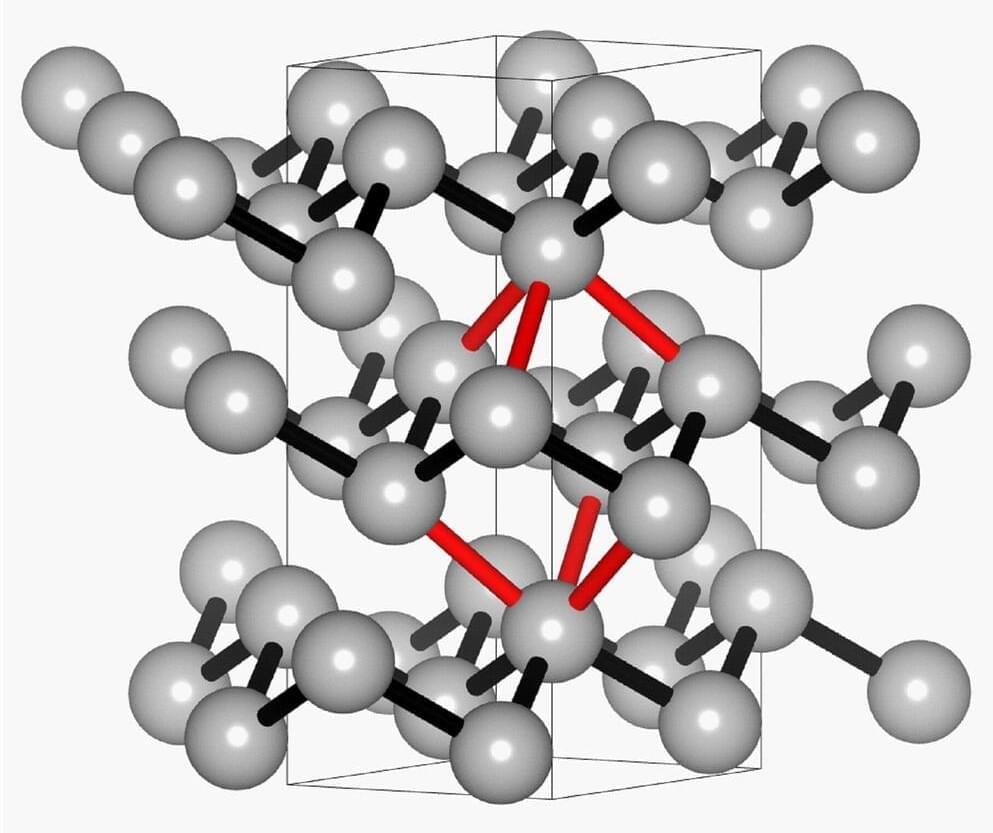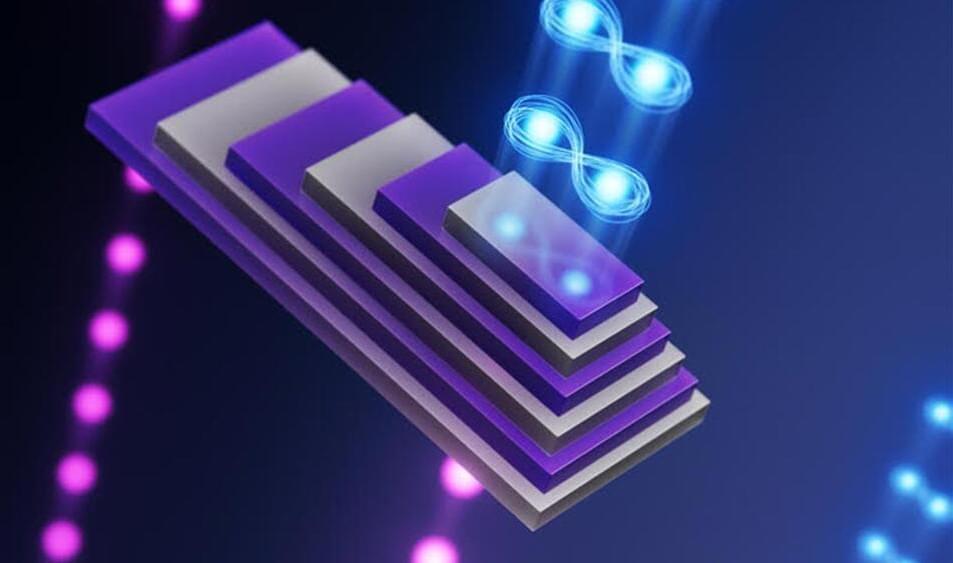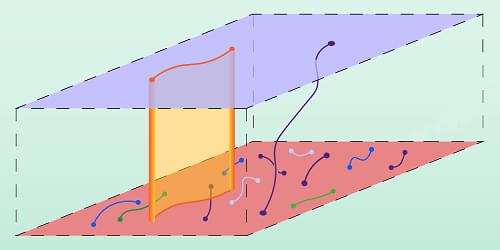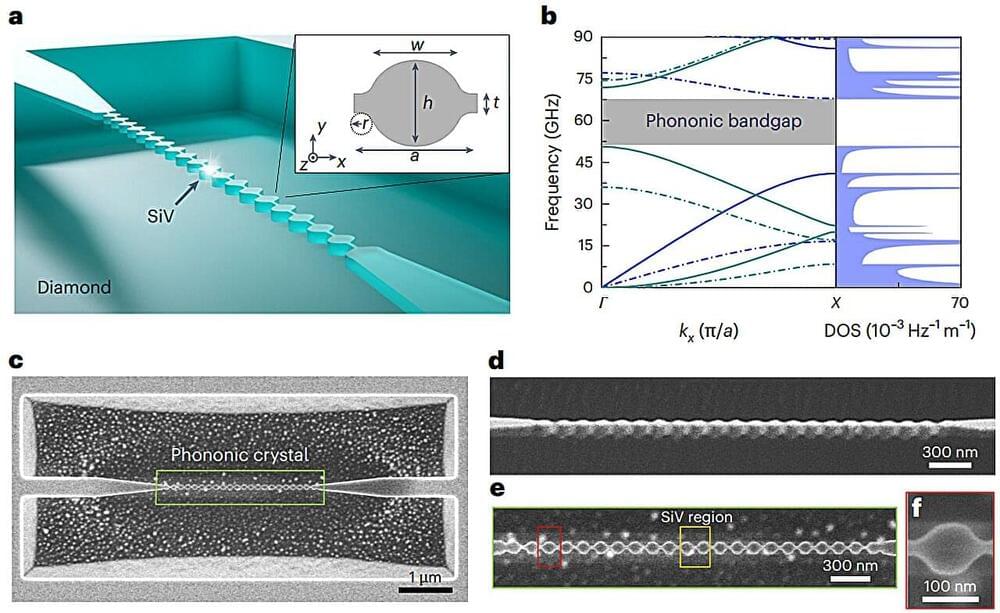The story of collapsing stars is often said to go from neutron stars directly to black holes, but there could be a number of intermediate steps where the structure of matter becomes one of quark soup. In this talk we take a look at the theory and the possibly evidence for such Quark stars — and compare them with the most dangerousmaterial thought possible — the strangelet.
Category: particle physics – Page 145

Antimony’s bonding characteristics offer insights into phase change materials
A new study that provides unprecedented insights into the chemical bonding of antimony could have a profound impact on materials research. The collaboration between scientists from Leipzig University, RWTH Aachen University and the DESY synchrotron in Hamburg combined experimental measurements with theoretical calculations.
The findings will help scientists to better understand phase change materials and, in particular, improve their application in data storage and thermoelectrics. The research has now been published in Advanced Materials.
The study combined experimental measurements with theoretical calculations, with the aim of analyzing the nature and strength of the chemical bonding in antimony. “The strength of a bond depends directly on the distance between the atoms,” says Professor Claudia S. Schnohr of the Felix Bloch Institute for Solid State Physics at Leipzig University, adding that comparisons with other materials such as metals and semiconductors show that this distance dependence is characteristic of the type of chemical bond.

From Spooky Action to Real-World Tech: Columbia’s Quantum Entanglement Breakthrough
A team of researchers has developed a miniature, energy-efficient device capable of creating photon.
A photon is a particle of light. It is the basic unit of light and other electromagnetic radiation, and is responsible for the electromagnetic force, one of the four fundamental forces of nature. Photons have no mass, but they do have energy and momentum. They travel at the speed of light in a vacuum, and can have different wavelengths, which correspond to different colors of light. Photons can also have different energies, which correspond to different frequencies of light.


Monster Shocks Could Explain Radio Bursts
Fast radio bursts (FRBs) are short blasts of radio waves whose origins remain a mystery. A new theoretical study explores a possible source in the atmospheres around highly magnetized neutron stars called magnetars [1]. Using numerical simulations, the researchers show that magnetar atmospheres can host powerful shock waves—or “monster shocks”—that produce gigahertz-frequency emissions, consistent with FRB observations.
The first reported observation of an FRB was in 2007, and since then astronomers have collected over a thousand bursts from across the sky. They seem to be connected to compact objects—such as neutron stars or black holes—located at large distances from Earth. “We know that they are cosmological, but their origin and production mechanism remain elusive,” says Arno Vanthieghem from Sorbonne University and the Paris Observatory. He and Amir Levinson from Tel Aviv University, Israel, have explored a possible connection between FRBs and magnetically driven shocks around magnetars.
Previous work has looked at FRB-producing mechanisms around magnetars, but Vanthieghem and Levinson are the first to explore shock-induced radio emission in the inner magnetosphere—the strong-magnetic-field region surrounding a magnetar. The researchers showed that a disturbance, such as a starquake occurring on the magnetar surface, can cause a magnetic-field wave to travel outward through the charged particles in the magnetosphere. They found that this wave can be amplified into a monster shock in which charged particles reach highly relativistic speeds. These particles emit a burst of radio waves that could be seen as an FRB by a distant observer. Vanthieghem says that future observations might be able to provide evidence for this mechanism by pinpointing the location of FRB emission within a magnetar’s environment.

Topological Order Intrinsic to Mixed Quantum States
Three theoretical studies have uncovered novel types of topological order inherent in open quantum systems, enriching our understanding of quantum phases of matter.
Nature showcases an extraordinary diversity of phases of matter, including many that can be understood only through the principles of quantum mechanics. Such quantum phases can exhibit topological order, characterized by long-range quantum correlations and exotic quasiparticle excitations. Despite extensive theoretical and experimental exploration over the past few decades, our knowledge of topological order has been largely restricted to closed quantum systems. However, real-world quantum systems are inevitably influenced by dissipation and decoherence, underscoring the need for a deeper understanding of open quantum systems—those that exchange energy, particles, or information with their surroundings. Now three research teams have identified new forms of topological order intrinsic to open quantum systems, expanding the spectrum of possible quantum phases and paving the way for advances in quantum information science [1– 3].
Conventionally, different phases of matter are classified based on symmetry. For example, ferromagnets break rotational symmetry since their magnetic moments align in a specific direction, even though the underlying physical laws remain invariant under spatial rotation. While this concept of spontaneous symmetry breaking has proven valuable, the past few decades have seen a new paradigm: topological phases of matter. Representative examples of these phases, such as fractional quantum Hall fluids and quantum spin liquids, display topological order [4]. This property does not arise from spontaneous symmetry breaking but from an intricate pattern of entanglement—nonlocal correlations central to quantum physics.

Newly fabricated crystals control interactions between high-frequency phonons and single quantum systems
Phonons, the quantum mechanical vibrations of atoms in solids, are often sources of noise in solid-state quantum systems, including quantum technologies, which can lead to decoherence and thus adversely impact their performance.
Strategies to reliably control phonons and their interactions with quantum systems could help to mitigate the adverse effects of these vibrations on the systems.
Researchers at Harvard University and other institutes have introduced a new approach to control the interactions between high-frequency phonons and single solid-state quantum systems. Their proposed method, outlined in a paper published in Nature Physics, relies on new diamond phononic crystals that they designed and fabricated, which can be used to engineer the local density of states in a host material.

Electrons in twisted graphene form novel 1/3 fractional quantum Hall state
A research team discovered a quantum state in which electrons move in a completely new way under a twisted graphene structure. The unique electronic state is expected to contribute to the development of more efficient and faster electronic devices. It may also be applicable to technologies such as quantum memory, which can process complex computations.
Quantum physics is a crucial theory that attempts to understand and explain how atoms and particles interact and move in nature. Such an understanding serves as the basis for designing new technologies that control or utilize nature at the microscopic level. The research conducted holds significance in discovering the quantum state, which is difficult to implement with conventional semiconductor technologies, and in greatly expanding future possibilities for quantum technologies.
Graphene is a material as thin as a piece of paper and is made of carbon atoms. This study utilized a unique structure comprising two slightly twisted layers of graphene, observing a new quantum state. When compared to two transparent films, each film has regular patterns, and when they are rotated slightly, the patterns overlap to reveal new patterns.

Scientists succeed in trapping molecules to perform quantum operations for the first time
Molecules haven’t been used in quantum computing, even though they have the potential to make the ultra-high-speed experimental technology even faster. Their rich internal structures were seen as too complicated, too delicate, too unpredictable to manage, so smaller particles have been used.
But a team of Harvard scientists has succeeded for the first time in trapping molecules to perform quantum operations. This feat was accomplished by using ultra-cold polar molecules as qubits, or the fundamental units of information that power the technology. The findings, recently published in the journal Nature, open new realms of possibility for harnessing the complexity of molecular structures for future applications.
“As a field we have been trying to do this for 20 years,” said senior co-author Kang-Kuen Ni, Theodore William Richards Professor of Chemistry and professor of physics. “And we’ve finally been able to do it.”
